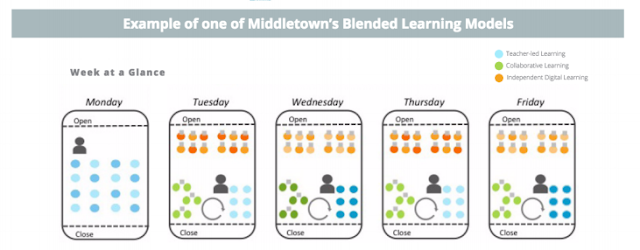Benefits of Blended Learning
3.0 Benefits of Blended Learning
At first glance, this popularity seems intuitive because blended learning courses allow students and faculty to take advantage of much of the flexibility and convenience of an online course while retaining the benefits of the face-to-face classroom experience. Eventhough fully online learning has become well established in higher education, many institutions appear to be struggling with conceptualizing and implementing blended learning. Yet, where blended learning courses have succeeded, they have most often done so when strategically aligned with an institution’s mission and goals. The development and delivery of blended learning courses can be used to address a variety of institutional, faculty, and student needs. Such as,
👐 For universities, blended courses can be part of a strategy to compensate for limited classroom
space, as well as a way to think differently about encouraging faculty collaboration.
space, as well as a way to think differently about encouraging faculty collaboration.
👐 For faculty, blended courses can be a method to infuse new engagement opportunities into
established courses or, for some, provide a transitional opportunity between fully face-to-face
and fully online instruction.
established courses or, for some, provide a transitional opportunity between fully face-to-face
and fully online instruction.
👐 For students, blended courses offer the conveniences of online learning combined with the
social and instructional interactions that may not lend themselves to online delivery (e.g., lab
sections or proctored assessments).
social and instructional interactions that may not lend themselves to online delivery (e.g., lab
sections or proctored assessments).
Therefore, if an institution’s blended learning strategy can be designed to address the needs and dynamics of all three constituencies (institution, faculty, and student) simultaneously, then blended learning can become a powerful force for institutional transformation.“Students in online conditions performed
modestly better, on average, than those learning the same material through traditional face-to-face instruction” (p.
xiv) and, notably, “Instruction combining online and face-to-face elements had a larger advantage relative to
purely face-to-face instruction than did purely online instruction” (p. xv). Not only do students perform better in
blended courses, but the electronic resources inherent in the modality offer other advantages as well. For
example, student performance analytics can be used to study and better understand student learning.
Data analytics can also identify students who need early intervention, thus increasing retention. The online tools available in blended courses can also significantly enhance student engagement, ensuring that all students participate in course discussions and benefit from collaborative learning. When properly implemented, blended learning can result in improved student success, satisfaction, and retention. For instance, the University of Central Florida has consistently seen such results over the 17 years of their own blended learning initiative. Since beginning this initiative, as of the end of the 2015-2016 academic year, UCF has delivered 10,941 blended course sections containing 394,962 student registrations and generating 820,492 semester credit hours.

Comments
Post a Comment